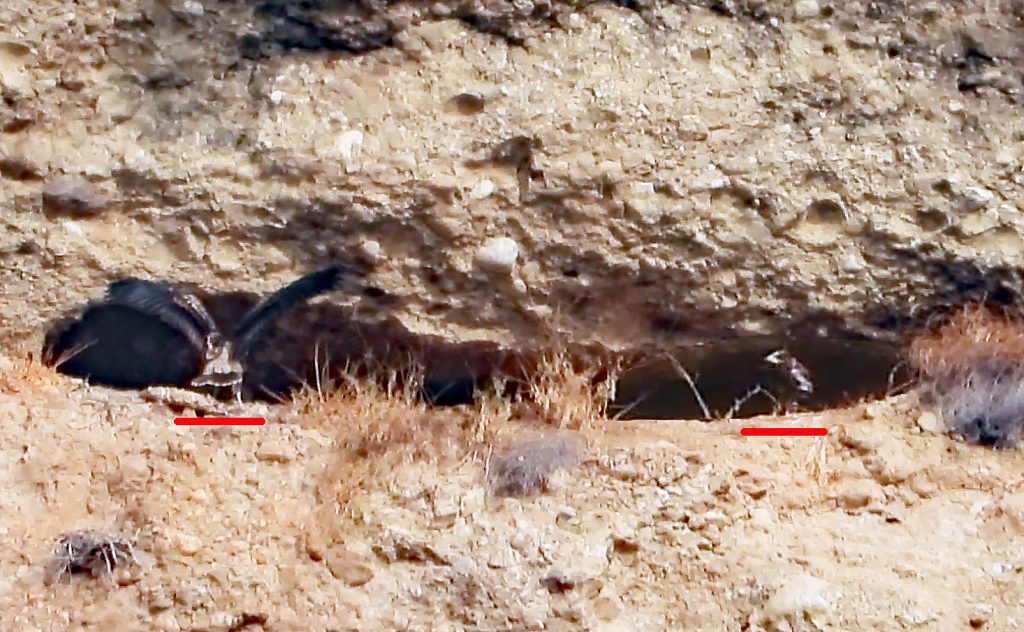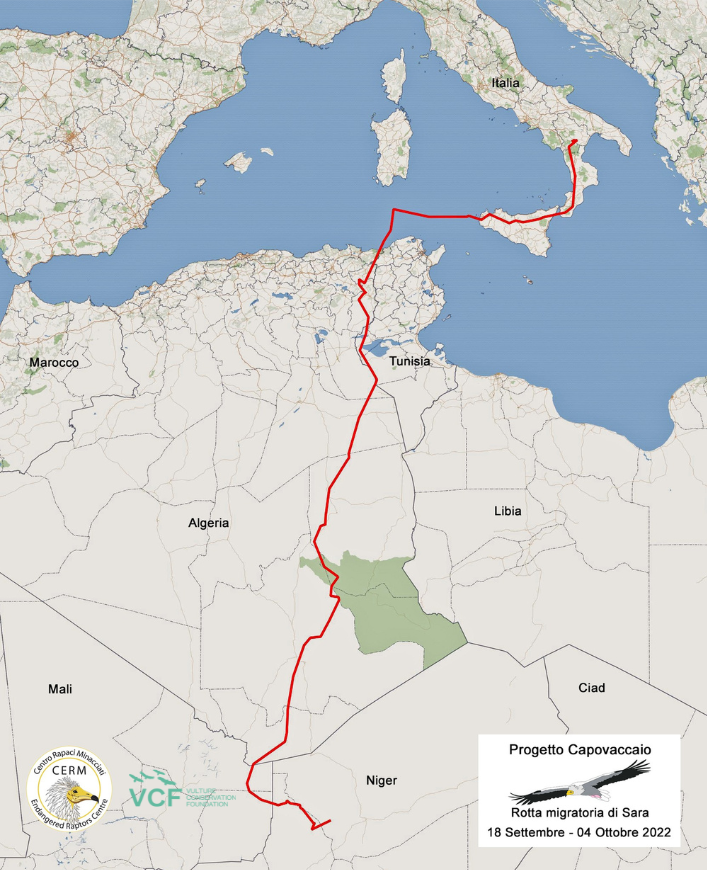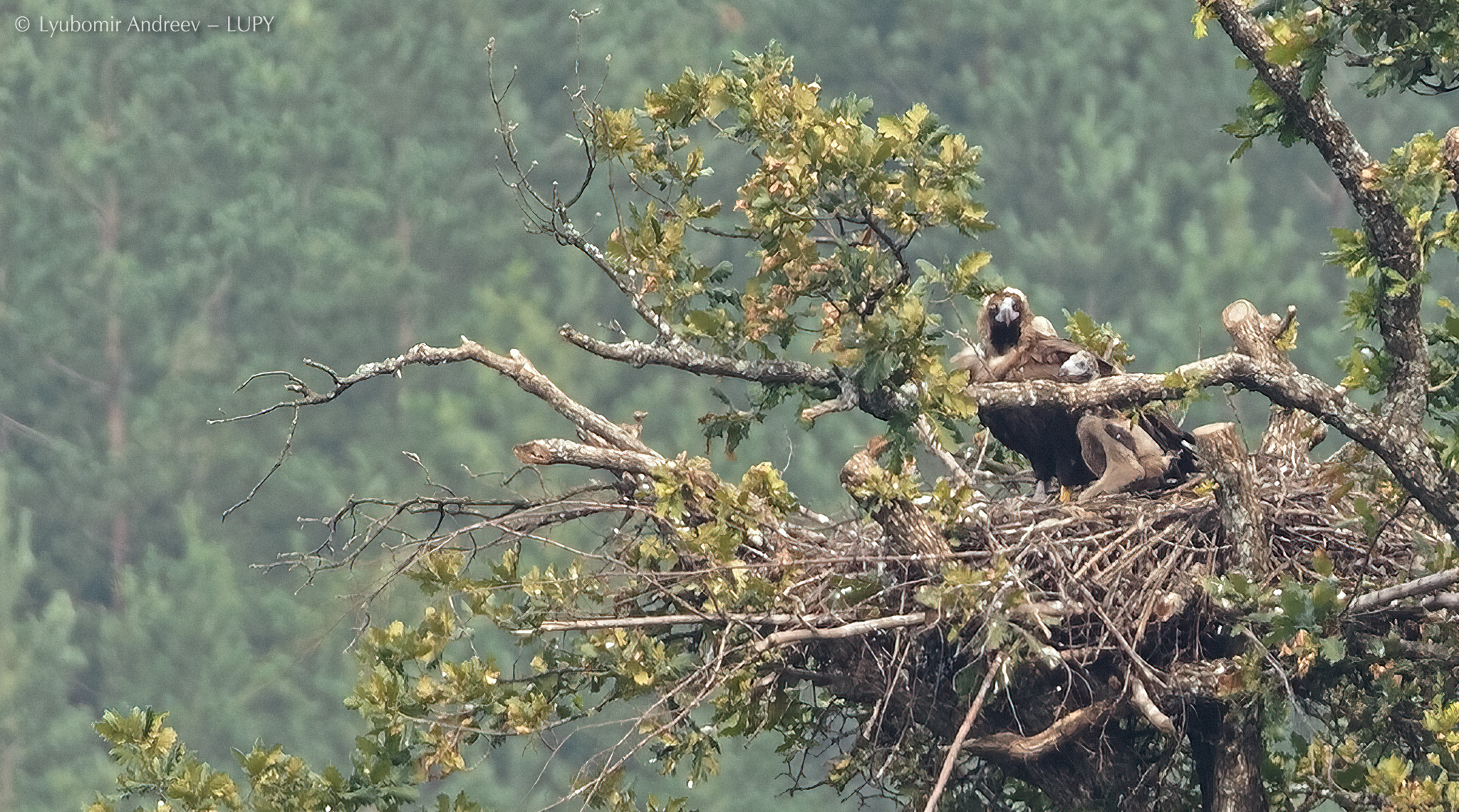
Africa is calling! The record-breaking Egyptian Vulture Sara recently left her nest in Basilicata alongside her partner and two chicks.
A crucial part of an ongoing conservation initiative
In 2015, the Egyptian Vulture Sara hatched at CERM Centro Rapaci Minacciati Association. A few months later, CERM and LIPU, with the support of the Ministry of Environment, released Sara in the wild in Puglia as part of the restocking efforts to boost the vulnerable population of the species in Italy. Ahead of her release, the field team installed a GPS transmitter, provided by the Vulture Conservation Foundation (VCF), on Sara to keep track of her movements and behaviour.
Sara’s GPS transmitter provides seven years’ worth of data
Her small, solar-powered GPS transmitter definitely proved durable since we have been able to follow her for seven years. Not only that, but this technology acts as a valuable tool, providing a lot of insights into the life of this ‘secretive’ species, which help us inform more accurate conservation actions.
A few days following her release, Sara moved away from Puglia and began her southward migration journey to Africa. She eventually reached Niger, which became her annual wintering grounds, after travelling 3,980 km for 28 days. Sara stayed in sub-Saharan Africa for four years before returning to southern Italy and has been spending the spring and summer months in Italy and autumn and winter in Niger ever since. This year, Sara started her migration northwards two months earlier compared to previous years, which suggested promising behaviour – was she getting ready to breed?
The first captive-bred Egyptian Vulture to breed in Europe’s wild
It seems Sara was not travelling alone on her way back to Italy. In the spring of 2022, Sara was spotted with an unidentified partner! To keep track of the progress, ISPRA commissioned ornithologists from the Calabrian Ornithological Station within the LIFE Egyptian Vulture Project to monitor the nest in Basilicata. The field team observed the different stages of the breeding behaviour from start to finish until the two chicks successfully took their first flights. This exciting development made Sara the first confirmed captive-bred Egyptian Vulture that successfully fledged chicks in Europe, which shows that captive breeding and release programmes can support the conservation of Egyptian Vultures in the long term.

Sara, her partner and two chicks left their nest
On 18 September, Sara, alongside her partner and two young, left their nesting area in Basilicata, according to direct observations made by the field team. Since that day, they did not see any of the four Egyptian Vultures in the area. The four vultures likely started travelling southward for their autumn migration to Africa. Although the project decided not to equip the chicks with a GPS transmitter to avoid any disturbance to the wild pair during the sensitive breeding period, we know for sure whether Sara made it to her wintering grounds or not.
Sara migrated to Africa for the fifth time
Sara left the nest and started her annual trip as usual. She followed the same migratory route as in previous years, except for the last stretch in Italy. After leaving the island of Marettimo in the Egadi Archipelago, instead of travelling to Cape Bon in Tunisia and stopping in Pantelleria, Sara continued west and found herself between Sardinia and Algeria. At this point, she turned south to the Tunisian island of La Galite. This 336 km long sea voyage seriously worried the team, but everything turned out well. After a stop on the island, Sara continued her journey the next day and started flying over Algeria. On 4 October, she reached her destination after covering around 4,000 km in 16 days. It’s official – Sara successfully made it to Niger, her usual wintering place, for the fifth time. She will likely spend the next seven months there before returning to Italy next spring to breed again hopefully!

There is more good news: the LIFE Egyptian Vulture project released six more captive-bred Egyptian Vultures in Basilicata this year, four in May and two in August, as part of the ongoing efforts to strengthen the local population of the species.




